An alternative A-Z of gardening for wildlife, regeneration, and wilding, Part 3

I is for insects and inspiration - If the insects thrive then the food chain will blossom. This is the foundation for your wildlife garden, and it is so simple. No chemicals and an aim to introduce an abundance and a diversity of flowering plants throughout the year. This includes your hedges, trees, fruit garden, kitchen garden, lawn, and flower beds – they all contribute. No single species lawn and a bare wooden fence. Sitting on a summer’s evening watching the insects, particularly over the wildflower turf, and hearing the flycatcher snap them in his beak is my inspiration.
J is for juxtaposition – This is a continuation of the ‘edge’ theme, creating those mixed habitats. Long-tail tits appreciate a thorny bush to weave their wonderful nest and sometimes use a small spikey ‘Crown of thorns’ bush. Unfortunately, they often succumb to predation, so I have planted around this single bush three gorse plants, a holly, and a rugosa to create an impenetrable fortress. Growing companion plants like pungent garlic helps carrots by confusing their smell to carrot fly. Plus. Borage is great among the vegetables as it attracts so many beneficial pest-eating insects.
K is for knowledge and kestrels – You can spend your whole life reading books, watching videos, and googling whatever. Undoubtedly you will gain knowledge in gardening for nature, but ultimately, it’s what works and grows in your patch, what you learn by experience, and what local people say. I have never read that mistle thrushes prefer larch trees for nesting. But here in Wiltshire, they do. They find a flat platform for the nest and like to lay their eggs before the fresh needle growth during incubation to help their line of sight to predators and then have a covering green canopy as the chicks near fledgling. A tree surgeon said to me ‘Why don’t you take out those old larch trees’ The larch trees stay. Understand what works in your garden and look after it. I mention kestrels as there are fewer around these days and I think they suffer from the increasing hordes of jackdaws both from nest competition and general harassment, but at least here they can be seen hovering over the mammal-rich long grasses.
L is for Lawns and leylandii – Is the beauty of a lawn its rich continuous shade of green, or its rich colours of daisies, clover, selfheal, and trefoils, buzzing with insects? Depends on what you like and of course, you could have both. But plain green lawns now remind me of sterile fields of barley or corn. We have removed seven large leylandii, which sucked life and water from about 20% of the garden we inherited. Useless dark forms from Mordor, no good for logs and little good for wildlife except where the collared doves and goldcrest like to nest, so we reprieved two. But I now have 20% more garden open to the World.
More in the next blog...

